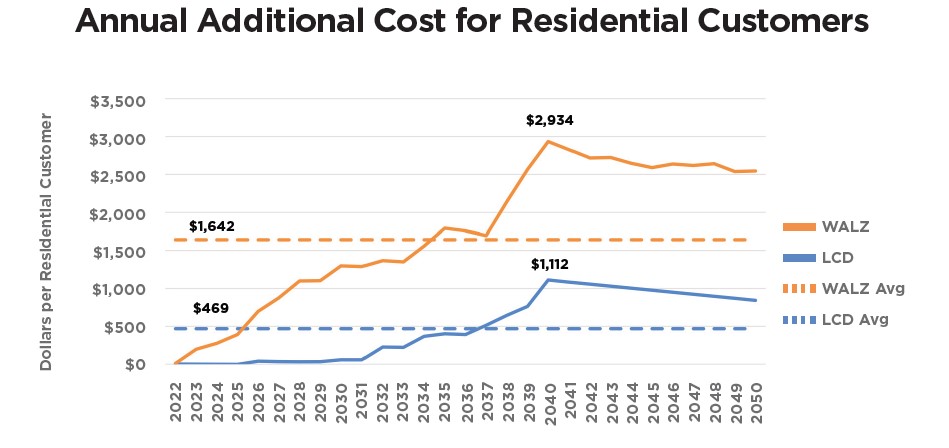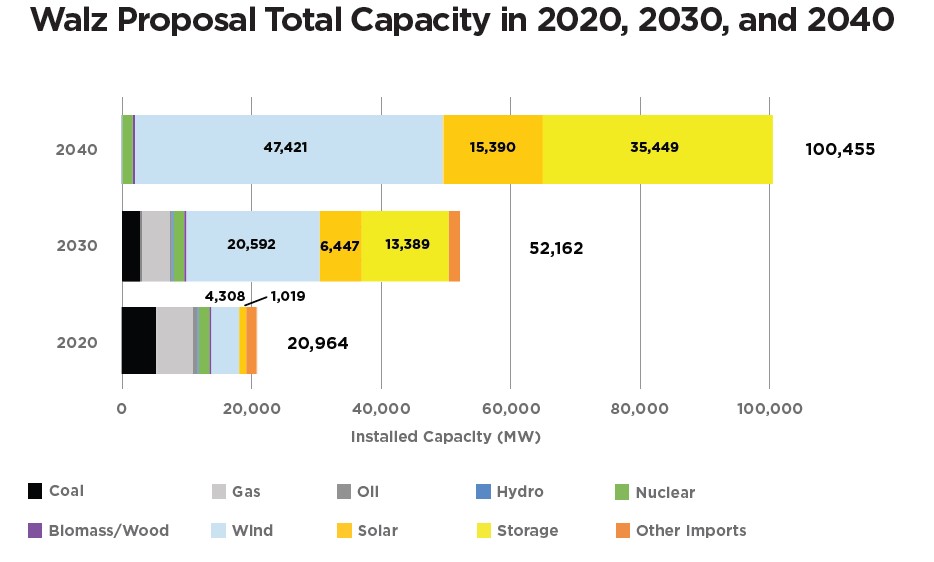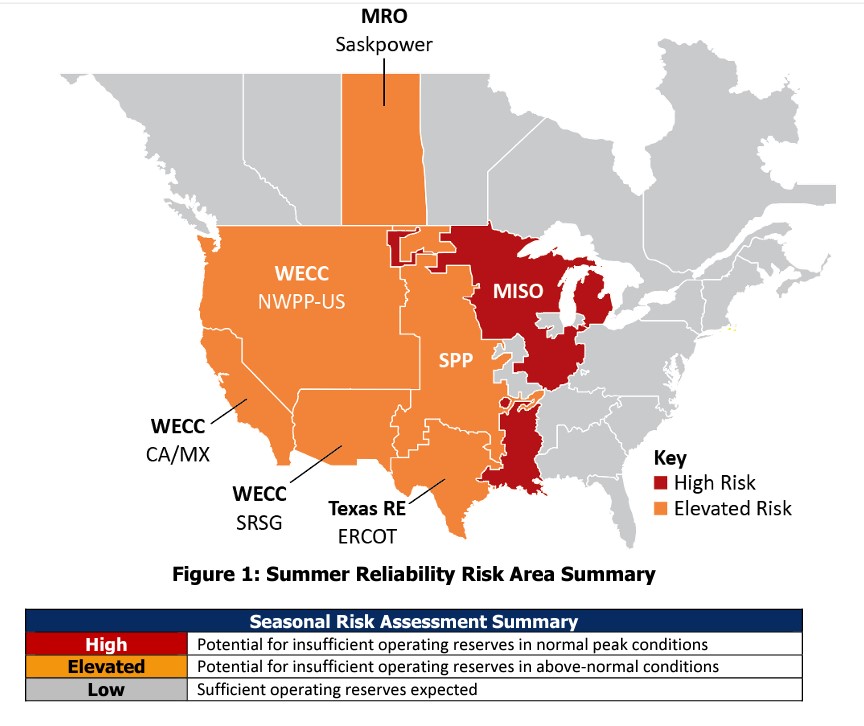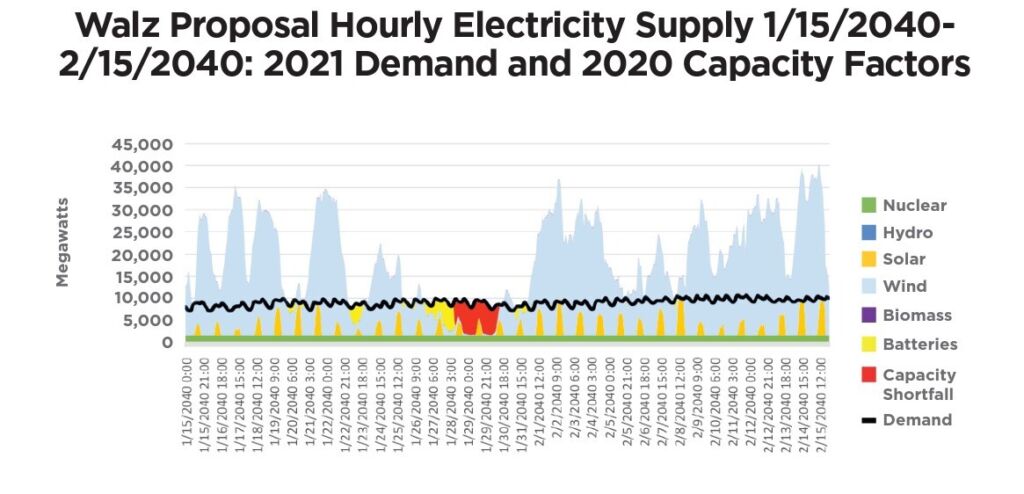In total control, MN Democrats push 100% carbon-free energy mandate that will increase energy prices and cause blackouts
The recent elections gave Minnesota Democrats total control of the state government for at least the next two years. According to an article in The Sahan Journal, they are wasting no time in seeking to pass new electricity mandates requiring that 100 percent of Minnesota’s power come from carbon-free electricity sources by 2040.
Unfortunately, this legislation will cause electricity bills for Minnesota families to increase by an average of $1,640 per year, every year through 2050, according to American Experiment’s new report on the mandates.
The mandates would also make our electric grid vulnerable to blackouts resulting from closing down our reliable coal and natural gas power plants and becoming overly dependent upon weather-dependent wind turbines, solar panels, and battery storage facilities.
What will the 100 percent carbon-free mandate look like?
The Sahan Journal article states that the version of the 100 percent carbon-free electricity mandate that passed the House of Representatives last session would commit all Minnesota utilities to reach 100 percent carbon-free energy by 2040, with benchmarks to hit every five years.
Carbon-free energy may be produced by renewable sources like solar, wind, hydroelectric, and nuclear power. Long expects a new bill to look similar.
It is important to note that the legislation passed in the House of Representatives last session would not legalize the construction of new nuclear power plants in Minnesota or allow the hydroelectric electricity generated in Canada that Minnesotans already purchase to count as “carbon-free.”
As a result, the proposed mandates would essentially be a wind, solar, and battery storage mandate, which would greatly increase electricity costs and decrease reliability.
Rising costs
Xcel Energy customers in Minnesota are already facing a proposed 20 percent increase in their electricity prices over the next three years to pay for wind turbines, solar panels, transmission lines, and Xcel’s proposed pilot programs for electric buses and electric vehicle (EV) charging infrastructure.
This large price hike will cost the average family an additional $220 per year. Unfortunately, the proposed 100 percent carbon-free mandate will increase bills by an average of $1,642 per year, every year through 2050. Actual additional costs will peak at $2,934 in 2040.

How do wind and solar increase electricity costs?
The most important thing to know about the electric grid is that the supply of electricity must be in perfect balance with demand at every second of every day.
If demand rises as Minnesotans turn on their air conditioners, an electric company must increase the supply to meet that demand. If companies cannot increase supply to meet demand, grid operators are forced to cut power to consumers to keep the grid from crashing.
Generating more electricity is relatively easy with dispatchable power plants — plants that can be turned up or down on command — like those fueled with coal, natural gas, and nuclear fuel. But adjusting to second-by-second fluctuations in electricity demand is much more difficult with wind and solar, whose electricity production is dependent on second-by-second fluctuations in the weather.
As a result, it will be much more difficult and expensive to provide reliable power as we become more reliant upon wind and solar to meet our energy needs.
It is possible to mitigate some of the inherent unreliability of wind and solar by vastly increasing the amount of wind and solar capacity on the grid (known as “overbuilding” wind and solar installations) to allow electricity demand to be met even on cloudy or low-wind days, and curtailing, or turning off, much of this capacity when wind and solar production is higher.
Other mitigation strategies include building more transmission lines and battery storage facilities. Each of these mitigation strategies, however, is a major driver of cost for the entire electric system.
For example, Minnesota currently relies upon about 20,964 megawatts (MW) of power plant capacity to meet its peak electricity demand of about 13,800 MW. But we can only meet our energy needs because we have reliable coal, natural gas, and nuclear power plants on our system that can be turned up or down to meet demand.

Under the proposed 100 percent carbon-free electricity mandate, Minnesota would need 100,455 MW of wind, solar, and battery storage capacity to meet our current electricity demand, a five-fold increase in installed capacity.
Paying for these wind turbines, solar panels, and battery facilities will cost an additional $313 billion compared to operating the current electric grid, which will necessarily come in the form of higher electricity costs for consumers.
Rising risk of blackouts
A rising dependence on wind and sunlight would also make Minnesota more vulnerable to rolling blackouts. This risk has already been identified by the North American Reliability Corporation (NERC), which said the Midwest, including Minnesota, was at the highest risk of rolling blackouts in the country last summer.

Problems would occur under the 100 percent carbon-free mandate if we experience weather conditions like we did in January and February of 2020 when a “wind drought” caused all of the wind turbines on the 15-state regional electric grid, the Midcontinent Independent Systems Operator (MISO), to produce less than 10 percent of their potential output for 80-straight hours.
In fact, wind output was below 1.5 percent of its potential output for 42-straight hours, which would lead to a massive 55-hour blackout in late January, shown in red in the graph below.

Democrats won total control of the legislature in the elections, so they get to call the shots. Unfortunately, the policies that liberal lawmakers have put forward will cause electricity prices to increase and make our grid less reliable.
American Experiment’s study also investigated how using a suite of reliable carbon-free technologies like new nuclear power plants, large hydroelectric power plants in Canada, coal plants with carbon capture and sequestration equipment, and battery storage could reduce emissions at a much lower cost.
Hopefully, Governor Walz will make good on his One Minnesota campaign theme and insist that these technologies are included in the 100 percent carbon-free electricity mandate to make it less expensive and more reliable.